Infectious diseases caused by bacteria and viruses in the dairy industry will be resulting considerable economic loss by reducing the amount of milk production. There is a wide range of diseases affecting dairy cows which affects productivity and profitability. These disease spreading can be prevented by keeping hygienic surroundings on the cattle farm and supplying proper nutritious food for better productivity and developing a better immune system to fight against the diseases.
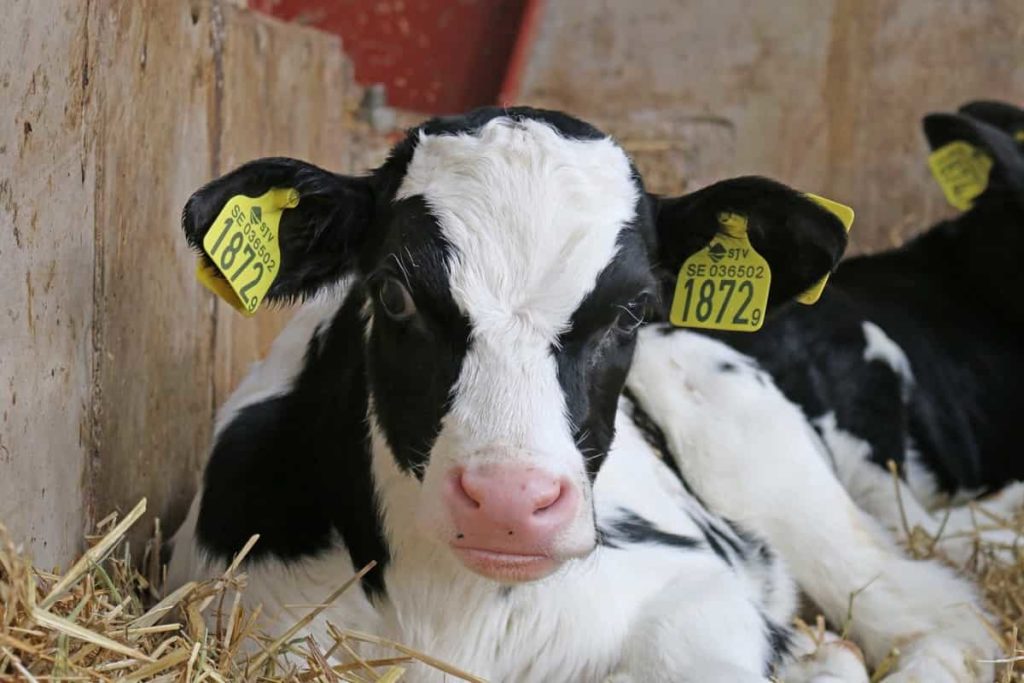
Common dairy cattle diseases, symptoms, and treatment
What is the most common disease that occurs in dairy cattle?
Bovine Mastitis, an inflammation of the mammary gland of a cow, is the most common dairy cattle disease. It causes economic losses due to reduced yield and poor quality of milk. The most common mastitis-causing bacterial pathogens are
- Coagulase-negative staphylococci,
- Streptococcus dysgalactiae,
- Staphylococcus aureus,
- Escherichia coli,
- Streptococcus uberis, and
- Streptococcus agalactiae.
This disease can be prevented by enhancing milking hygiene, post-milking teat disinfection implementation, maintenance of milking machines, etc. In severe cases, the cow’s body temperature will rise, and the milk produced by the infected animals will look like water and may contain flakes, clots, pus, or blood. Other symptoms of Mastitis can also include reduced milk yield, lack of appetite, sunken eyes, a reduction in mobility, and signs of diarrhea and dehydration.
What are some diseases in dairy cattle?
Bleeding calf syndrome
Bleeding calf syndrome is also known as bovine neonatal pancytopenia. This disease can see in newborn calves resulting in a blood cell count will decrease and depletion of the bone marrow. In affected calves, bone marrow cells that produce platelets are also destroyed.
Bluetongue
Bluetongue is an arthropod-borne non-contagious infectious viral disease infected in domestic dairy animals and wild ruminants transmitted by certain Culicoides midges. Clinical signs caused by vasculitis are more commonly observed in sheep than in other ruminants. Both vaccination and vector control is critical to controlling bluetongue. This disease is typically transmitted by Culicoides biting midges following a bite to consume a blood meal from susceptible animals.
In case you missed it: Best Practices to Grow Sweet Potatoes at Home: Check How this Guide Helps Beginners
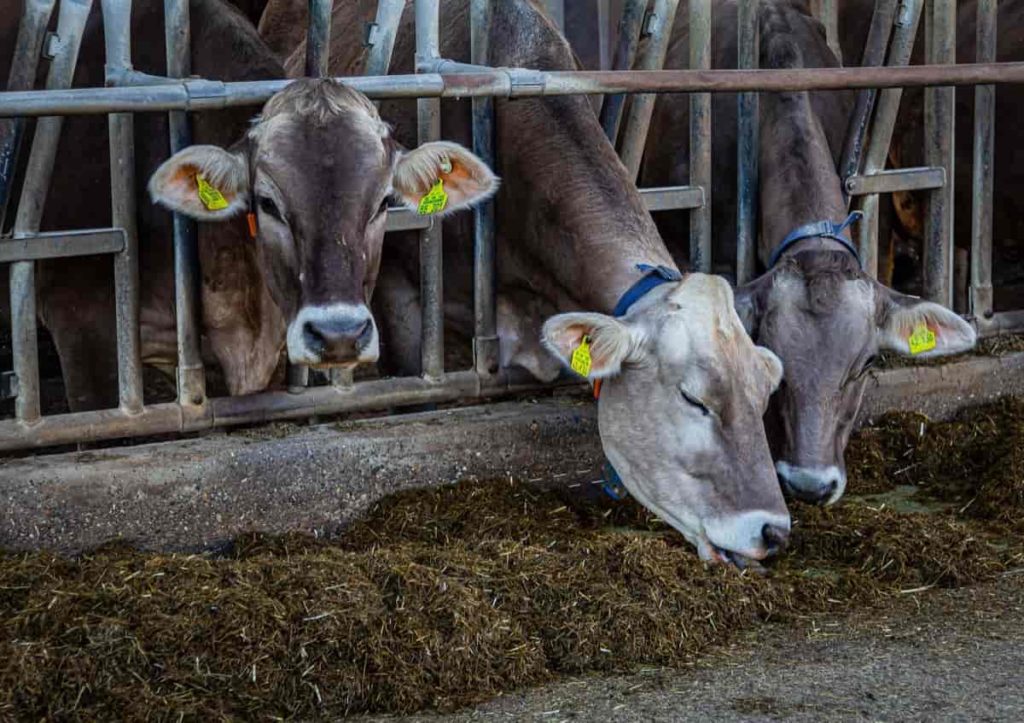
Bovine Tuberculosis
Bovine Tuberculosis is an infectious respiratory disease of cattle caused by the bacterium Mycobacterium Bovis. It causes mainly respiratory problems in dairy animals. The usual clinical signs look weak, with less appetite, weight loss, fluctuating fever, intermittent hacking cough, diarrhea, and large prominent lymph nodes.
Bovine Ulcerative Mammary Dermatitis
Ulcerative mammary dermatitis is also called necrotic mammary dermatitis. It causes udder seborrhoea, intertrigo, or foul udder. It causes sores with a characteristic pungent smell, a moist exudate, and dermatitis, generally at the front of the udder, in front of the forequarters, and next to the abdominal wall. Ulcerative mammillitis is a viral infection of the skin of the teats and udder of dairy cattle, and it is caused by a herpes virus, also known as BHV-2.
Calf Pneumonia
Calf pneumonia is also called Bovine Respiratory Disease. It is a complex, multi-factorial disease. It mainly affects the lungs and respiratory tract. It results in inflammation of the lungs and damage to the tissues and respiratory tract. It is the most common cause of poor performance and death in growing calves. Clinical signs of pneumonia in calves are reduced feeding, head dropping, increased respiratory rate, nasal discharge, Cough, and Raised temperature.
Brucellosis
It is the most contagious disease that can be seen in ruminant animals like cattle, bison, and cervids. Although brucellosis can infect elk and deer, and swine, however, its main threat is to cattle, bison, and cervids. Brucellosis is also known as Bang’s disease.
Some cattle become carriers, transmitting the bacteria without showing illness signs. The most apparent signs in pregnant cattle include abortion, the birth of weak calves, and vaginal discharge. Not all infected cows abort, but those infected animals may abort between the fifth and seventh-month pregnancy.
What causes milk fever in dairy cattle?
Milk fever is caused by insufficient calcium due to a metabolic disorder commonly occurring around calving. Milk fever is also called Hypocalcaemia. It occurs when the dairy cow has low blood calcium levels. It usually occurs when calcium in the blood falls below 1.6mmol/L. The affected animal may turn its head into its flank or extend its head. The animal appears dull and listless, has cold ears and a dry nose, exhibits incoordination when walking and muscles trembling and quivering are evident.
What is Johnes in cattle?
Johne’s disease is a contagious, chronic, and fatal bacterial infection that primarily affects the small intestine of ruminants like cattle, goats, and sheep. This bacterial infection is caused by the bacteria Mycobacterium avium subspecies paratuberculosis. This disease is also called Yo-nees disease.
Signs of this Johne’s disease include weight loss and will suffer diarrhea with appetite in appetite. Several weeks after suffering from diarrhea, a soft swelling will be seen under the jaw. This intermandibular edema is due to protein loss from the bloodstream into the digestive tract.
What are the signs & symptoms of brucellosis in cattle?
Some cattle become carriers and spread the bacteria without showing signs of illness. The most common signs in pregnant cattle include abortion, the birth of weak calves, and vaginal discharge. Not all infected cows abort, but those that do usually abort between the fifth and seventh month of gestation. Brucellosis causes reproductive problems like abortions, stillbirth, and infertility in most species of animals. Other signs can include arthritis in cows, Mastitis, which looks weak in goats and oozing skin lesions in horses.
What are the symptoms of Johne’s disease in cattle?
Johne’s disease damages the intestines of affected animals in cattle. This damage in the intestines results in diarrhoea, severe weight loss, loss of condition, and infertility. Affected animals eventually and inevitably die. It is very closely related to the organism that is responsible for Tuberculosis.
All ruminants are exposed to this disease at some point in time. In addition, all infected animals discharge the organism through feces into the environment, thereby creating a possible route of exposure for transmission. In the infected animal, fecal organism detection tests are the most accurate diagnostic test.
What are the signs and symptoms of liver fluke in cattle?
Liver fluke can infect cattle, sheep, and goats, as well as a range of other animal species.
Other signs that may be seen in the infected animals are bottle jaw, swelling below the jaw, Terminal diarrhoea, weight loss, and general ill-thrift Reduced fertility, leading to reduced production. Anaemia can be seen through pale gums and membranes around the eyes. In Some cases, Terminal diarrhoea, Livers trimmed or condemned at the abattoir, abdominal pain, diarrhea, or constipation can be seen in infected animals.
In case you missed it: Common Poultry/Chicken Diseases, Symptoms, and Treatment: Check How this Guide Helps Poultry Farmers
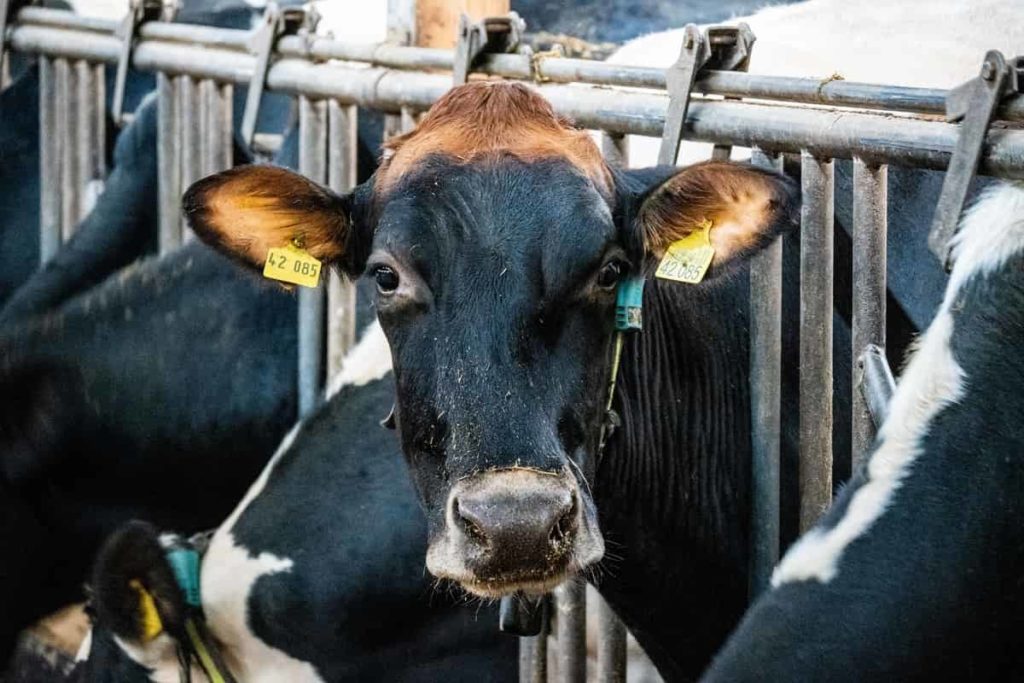
What is Q fever in cattle?
Q fever is a widespread infectious disease caused by the bacteria Coxiella burnetii. It causes a mild disease in ruminants but can cause abortions and stillbirths in cattle, sheep, and goats. Q fever is a severe bacterial infection that can cause a flu-like illness. To prevent transmission of the bacteria that causes Q fever by maintaining good hygiene practices on premises of sheep, cattle, and goats.
What is anthrax in cattle?
Anthrax is a bacterial disease infected in grazing animals when exposed to the spore-forming bacteria Bacillus anthracis. Anthrax naturally infects wild and domestic hoofed animals like cattle, goats, and sheep. When these animals graze on lands that have the bacteria, they will be infected by inhaling. This infection also spreads through contaminated food and water. This bacterium will spread from one place to another place through streams and rivers during floods and remain in the soil for a considerable time.
There are three types of anthrax infection:
- cutaneous anthrax, which causes skin infection,
- inhalation anthrax which infects in lungs and
- gastrointestinal anthrax, the infection can be seen in the stomach and intestine.
What are the symptoms of worms in cattle?
General symptoms of worm infections are rough hair coat, diarrhea, emaciation, weight loss, and blood loss. External parasite symptoms are hair loss due to lice, scabs due to mites, lump on the back due to grubs, blood loss and weight loss by flies, and sucking lice and ticks. Clinical signs of wormy cattle include pale mucous membranes, bottle jaw, pot belly, diarrhea, drawn, loss of appetite, not chewing cud, rough and dry haircoat, thinness, weakness, and unable to stand. These signs are the same as malnutrition and liver flukes suffered by animals.
What bacteria cause pneumonia in cattle?
The bacteria that cause pneumonia is Pasteurella Haemolytica. This bacteria is also called Mannheimia haemolytica. Other viruses responsible for this disease are Pasteurella multocida, Histophilus somni, and Mycoplasma Bovis. This viral infection occurs when the air quality or husbandry is very poor. Pneumonia is also known as a bovine respiratory disease in cattle. The infected animals will suffer from a high fever of 40 °C, loss of appetite, increased respiratory rate, decreased milk production, and Excessive nasal discharge.
What is anaplasmosis in cattle?
Bovine anaplasmosis is an infectious, non-contagious red blood cell disease caused by the bacteria Anaplasma marginale. Any age of the animal can become infected by this bacterium. This disease is also known as a yellow bag or yellow fever. Unless adequately medicated, cattle that recover from anaplasmosis remain carriers of the disease for the rest of their lives and transmit it to healthy animals.
How do you treat anaplasmosis in cattle?
Anaplasmosis in cattle is commonly treated with tetracycline antibiotics, most effective in the early stages of the disease. Clearance of carrier animals through antibiotic treatment has been reported but requires multiple doses over long periods. There is no vaccine to prevent anaplasmosis. Prevent illness by preventing tick bites and preventing ticks in the yard. Ticks live in grassy, brushy, or wooded areas or even on animals, so spending time outside camping, gardening, or hunting will bring in close contact with ticks.
What are the basic symptoms of blackleg in dairy cattle?
Blackleg is a preventable, soilborne disease of both cattle and sheep. It is caused by Clostridium chauvoei, a soilborne bacterium, and is almost always lethal. An infected animal’s signs and symptoms include lameness, low appetite, depression, high respiratory rate, fever, and swelling. Sometimes the animal will appear lame on the affected leg before any other sign is noticed.
In case you missed it: Common Goat Diseases, Symptoms, and Treatment: Check How this Guide Helps Goat Farmers
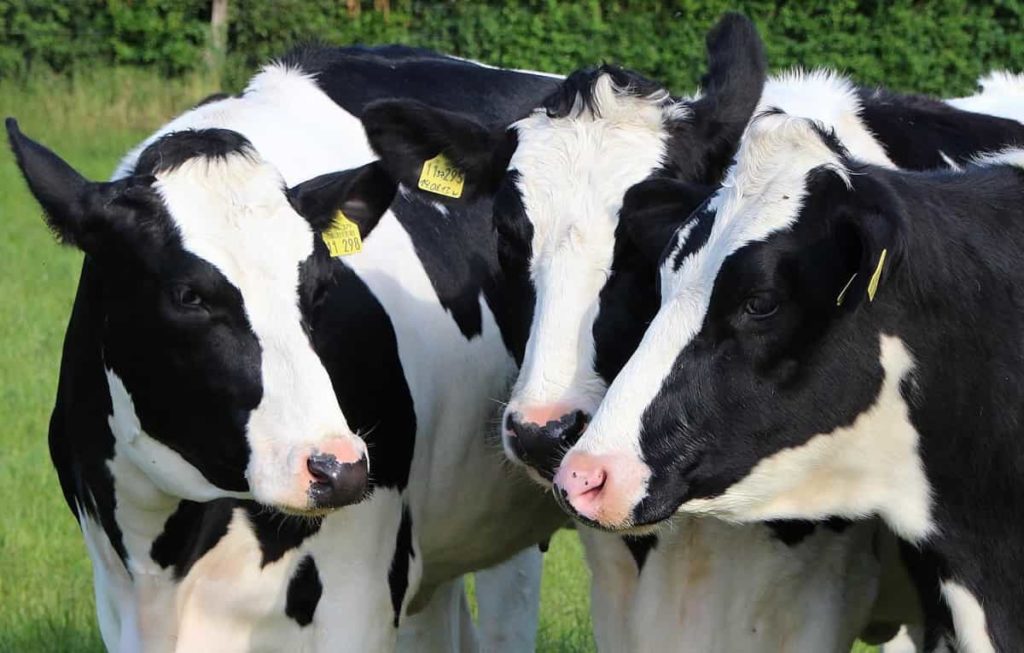
How can to confirm if a cow is infected with anthrax?
Anthrax is an acutely fatal disease commonly seen in grazing animals like cattle, horses, goats, sheep, and some wild animals. The infected animals generally die suddenly. These bacterium-infected animals will suffer from high fever. The body temperature of the infected animals may go up to 41°C. Milk production is noticeably reduced in lactating animals, and pregnant animals will be aborted. The other signs may include chills, severe colic, anorexia, depression, weakness, bloody diarrhea, and swellings of the neck, sternum, lower abdomen, and external genitalia.
What is the preferred treatment for anthrax?
Because Anthrax infection is very rapidly, immediate administration of appropriate antibiotics is needed. Naturally occurring anthrax will have been controlled by penicillin in the early stages of infection, so penicillin has been suggested as the first line of defense against anthrax. Prevention of Anthrax in the cattle industry by quarantining the infected animals, disposal of contaminated carcasses away from the cattle farm, and restricting animal movements in the contaminated areas. Vaccinate healthy animals to prevent the further spread of disease.
What are the key symptoms of pneumonia in dairy cattle?
Affected animals may display the signs like nasal or oral discharge, labored or rapid shallow breathing, coughing, depression, lethargy, emaciated body condition, extended head and neck, and droopy ears. Other signs may also include Reduced appetite, suffering from high fever of more than 40 °C, high respiratory rate, cough, excessive nasal discharge, and decreased milk production.
What is Pasteurella in cattle?
Pasteurella infection is an opportunistic infection most generally seen in calves. The bacteria responsible for this disease are Mannheimia, haemolytica, and Pasteurella multocida. The bacteria are normally found in the upper respiratory tract, but the disease occurs when the normal defense system of the animal is compromised. This acute diseased animal suffers from fever, high breathing rate, and nasal discharge. Some deaths may occur, and many animals remain dull and anorexic after recovery, causing significant economic losses.
What are the signs of anaplasmosis in cattle?
The main signs of anaplasmosis are fever, jaundice, and anorexia. Additional clinical signs may include progressive anemia, weakness, less appetite, low coordination, aggression, difficulty breathing, pulse rate that will raise rapidly, decreased milk production, brown urine, and sudden death. Tetracycline antibiotics are commonly used for the treatment of this disease. Infections may be completely cleared by treatment with these drugs, and the cattle then remain immune to severe anaplasmosis for at least eight months.
Is diphtheria contagious in cattle?
Diphtheria is an acute fatal viral disease caused by the infectious virus bovine rhinotracheitis. Diphtheria causes an upper respiratory problem in cattle differentiated from other diseases by inflammation of the vocal folds. It can be serious if it restricts the airway and makes breathing difficult. Diphtheria is most generally seen in calves less than three months of age. The infected animals will show symptoms like fever, depression, anorexia, high salivation, and bad-smelling breath.
What are the symptoms of diphtheria in cattle?
Diphtheria occurs most commonly as necrotic stomatitis in calves less than three months of age. This Necrotic stomatitis causes fever, depression, anorexia, excessive salivation, and bad-smelling breath. As the infection is confined to the mouth, the calf may suffer from mild fever and less appetite. Signs may also include slobbering, with swelling in the cheek area. The breath may be foul.
What causes Mastitis in dairy cows?
Bovine Mastitis is an inflammatory udder tissue in the mammary gland disease. It is considered the most common disease that results in poor quality milk leading to economic loss in dairy industries. The predominant cause of Mastitis is a bacterial infection of the teat canal. It can also be caused by physical, chemical, or heat damage to the udder tissue.
In case you missed it: How to Grow Curry Leaf/Kadipatta Plant at Home: Check How this Guide Helps Beginners
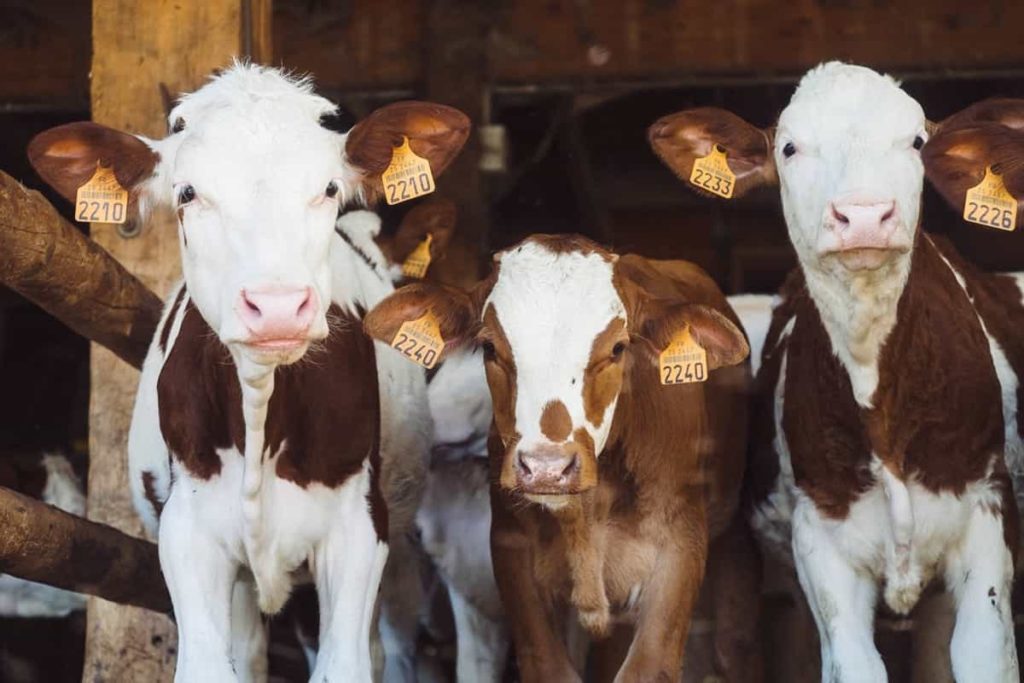
What are the symptoms of diseased animals?
Infected animals may show symptoms like loss of body weight, decreased production, reduced feed consumption, droopiness, and lameness. An enlarged liver, a tumor on the intestine, or an abscess in a lung are examples of lesions. Many symptoms are general; they usually are seen in any diseased individual.
How will you identify sick cattle at a dairy farm?
Cattle infected with bacterial and viral diseases may not have been eating and drinking properly, and their abdomens are often unable to walk properly. Rapid weight or body condition loss is also considered a symptom of an ill animal. Other signs of illness include labored breathing, deep coughing, eye, and nasal discharge, bloody diarrhea, or depression.
What causes lethargy in cattle?
Lethargy is a parasitic infection caused by cattle parasites, mainly by Bush ticks, but can attach to other mammals and domestic animals such as dogs and cats. The most common areas where these parasites are founds are on the tail, on the udder, on the legs inside portion, on the brisket, in the ears, and occasionally on the face and neck.
This disease is called bovine anaemia. Signs in affected animals can be seen, like severe anaemia, lethargy, lack of appetite, and exercise intolerance. If the affected animals are forced to run, the breathing rate will increase rapidly, and some may collapse and die.
How can cattle diseases be prevented?
Many diseases can be best prevented through good animal management methods, hygienic surroundings on the cattle farm, proper nutrition, and vaccinations. Cattle should receive specific vaccinations at a definite gap from vaccination to vaccination. Vaccination is the only way to avoid diseases that do not have treatment, such as anthrax, infectious bovine rhinotracheitis, and many other diseases.
Where do roundworms live in cattle?
Roundworms live in the gastrointestinal tract of grazing animals like adult cattle and goats and shed eggs in cattle manure. These eggs develop into larvae that live in pasture grass and are consumed by grazing cattle, causing the cycle to repeat. Clinical signs in infected animals include scouring, weight loss, pale gums, and membranes around the eyes or bottle jaw, depending on the worm type.
What is the treatment of milk fever?
Milk fever can be treated by supplying calcium along with food in the early stages. Later stages may need intravenous calcium. Any intravenous treatment needs to be performed by a qualified veterinarian doctor. Continuous observation and timely treatment are important; otherwise, the cow may die due to circulatory failure or respiratory collapse.
What are the symptoms of worms in cattle?
General symptoms of worm infections are rough hair coat, diarrhea, emaciation, weight loss, and blood loss. External parasitic symptoms are
- Hair loss by lice
- Scabs due to mites
- Lumps on the back by grubs
- Blood loss and weight loss due to flies, sucking lice, and ticks
In case you missed it: How to Grow Microgreens from Seed to Harvest: Check How this Guide Helps Beginners
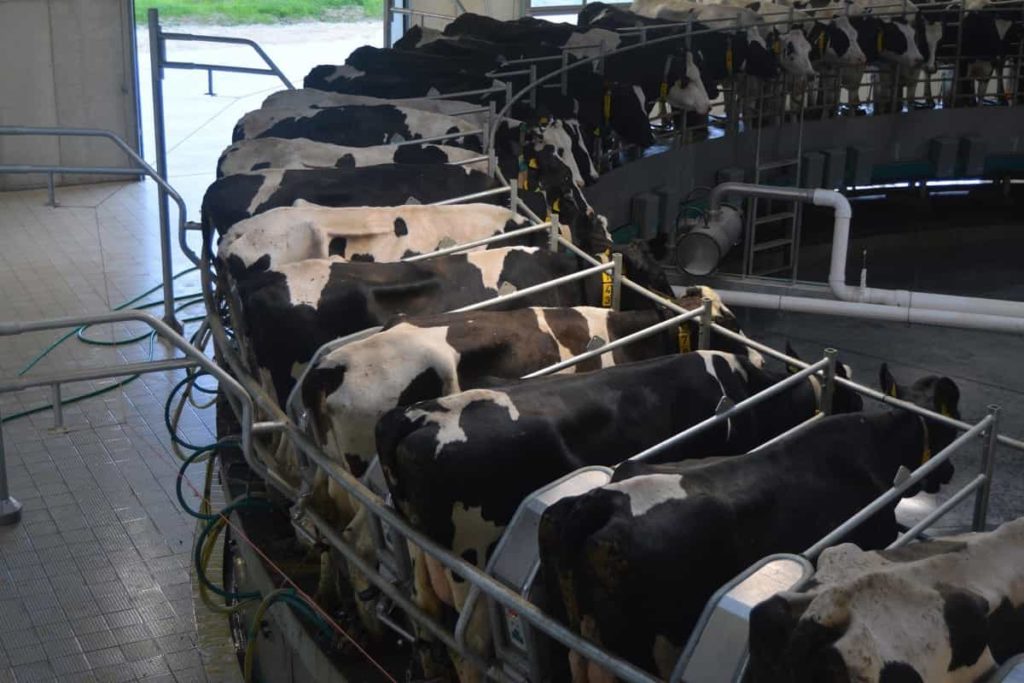
What are the symptoms of liver fluke in cattle?
Liver fluke is caused by a parasite called Fasciloa hepatica. The epidemiology of the disease is influenced by the grazing habits of animals. Cattle often graze in the wet marshy areas favoured by the fluke snail, so the eggs are deposited in a suitable environment. Liver fluke will infect cattle, sheep, and goats, as well as a wide range of other animal species.
Animals suffering from flukes have symptoms that include bottle jaw, weight loss, reduced fertility, Anaemia, terminal diarrhoea, and liver condemnation at an abattoir.
Conclusion
Prevent dairy cattle from diseases by having better control of cattle farms by keeping surroundings dry and Hygienic. And also have good knowledge & follow-up on vaccinations to prevent diseases that do not have treatment. Maintaining a healthy herd leads to an increase the productivity by getting good quality milk and, from that, good dairy products.
- How to Raise Pigs in Your Own Backyard: A Comprehensive Guide
- Budget Friendly Sheep Shed Ideas: Cheap and Low-Cost Tips
- How Much Do Cattle Farmers Make: Revenue Streams in Cattle Farming
- Management Pests and Diseases in Your Cotton Field
- Sheep Farming Business Plan for Beginners
- Aquaponic Farming at Home: A Step-By-Step Guide
- Profitable Village Farming Business Ideas in 2024
- High-Yield Aquaculture: Fast-Growing Fish for Farming
- Effective Fish Pond Construction Techniques for Beginners
- Irrigation and Water Management in Pineapple Farming
- Blossom to Harvest: Mastering Flowering and Pollination in Papaya Farming
- Pig Fattening Essentials: From Selection to Sale for Beginners
- Raising Wagyu Cattle: A Complete Guide for Premium Beef Production
- Soil Types and Their Water Holding Capacity
- Optimizing Irrigation Schedules for Coconut Groves for Enhanced Yield
- Espresso Your Garden: Coffee Grounds for Healthier Acid-Loving Plants
- The Best Soil Mix for Snake Plants: How to Mix Your Own Snake Plant Soil
- Green Thumb Success: Expert Tips for Cultivating Greenhouse Beans All Year Round
- Bloom All Year Round: The Ultimate Guide to Indoor Hyacinth Care
- Eco-Friendly Gardening: How to Make Liquid Fertilizer from Kitchen Waste
- Ultimate Guide to Grow Anise in Pots: Explore Seed Propagation to Harvesting
- Guide to Raising Chester White Pigs: Discover Breed Facts to Growth Management
- Mastering the Elegance: The Ultimate Guide to Weeping Cherry Tree Care, Planting, and Maintenance
- Ultimate Guide to Planting Garlic in Grow Bags: Growing Strategies for Beginners
- How to Fix Spider Plant Leaf-Related Problems: Natural and Organic Remedies
- 10 Reasons Why Your Tulsi Plant is Shedding Leaves: Home Remedies and Solutions
- Optimizing Growth and Yield: The Advantages of Palm Bunch Ash Fertilizer
- Utilizing Neem Oil Extract as a Natural Pesticide for Hydrangea
- From Soil to Harvest: Various Ways in Which Farmers Can Use AI Tools
- Steps to Encourage and Induce Citrus Flowers: A Comprehensive Guide
- How to Fix Snake Plant Leaf-Related Issues: Natural and Organic Remedies
- Transform Your Garden into a Fragrant Oasis with Raat Ki Rani (Night Blooming Jasmine)
- Discover the Ideal Chicken Breeds for Philippine Farms
- How to Create a Poultry Egg Farm Business Plan for Profits
- Grow Lemon Cucumbers Like a Pro: Insider Techniques for Bountiful Yields
- Ultimate Guide to Caring for Your Pink Princess Philodendron: Tips for Thriving Variegation
